Top 7 futuristic technologies that will help you save energy at home
by: Ecofriend, 2011-09-16 04:58:45 UTC
Pratima Kalra:

environment conservationenvironment conservation
Before we focus on national level environment conservation policies, it is time to start with our own homes. Although science has demonstrated ways of energy conservation using solar energy, geothermal energy, etc. their routine application is yet to be implemented. Sometimes we resist change and at other times our pockets restrict us from becoming environmental friendly. Future will not spare us the option to play with environment and rigorous work is being done to bring to people affordable solutions that will change the way we use energy. Some of the up- coming technological changes that will soon become parts of our lives are given below.
1. Sonic water purifier

Sonic water purifiersonic water purifier that works with ultra waves
When ultrasonic waves strike water molecules, their cellular walls burst and the carbon bonds are released from the contaminants. This is the process that sonic water purifiers use for their water systems, giving water purifying a new dimension.
2. Geothermal heat pump

Geo-thermal heat pumpUses latent energy from inside the earth.
Gathering and using the heat energy inside earth for heating and cooling of buildings with the help of special geothermal pumps is being propagated among important energy saving methods.
3. Wind generator

Wind TurbinesWind will be used for generating energy
The wind generator commonly works with the help of wind turbines. Wind as a natural source is available in plenty and is renewable exuding no harmful emissions. The only limiting factor is availability of strong winds. Research is actively seeking to construct wind generators that will work efficiently even with light winds.
4. Solar innovations

Solar PanelsUsed for generating solar energy
The word solar has indeed become a fashion statement. There is solar cooking, solar architecture, solar heating and who knows what the current efforts of research will yield in the future. Solar energy is captured through of solar panels and then used for various purposes.
5. Frozen smoke

Frozen smokeThe lightest form of solid
This expectantly wonder material, frozen smoke or solid smoke or even called solid air is creating quiet a buzz amongst the 21st century energy technologies. Still in the nascent stages of development, scientists aim to use this aerogel based technology to protect houses against harmful emissions and also against blasts. Aerogel is made by extracting water from silica, aluminum or carbon gel and replacing it with gas, thus making it the lightest solid form.
6. Hybrid water heaters

Hybrid water heateruses tank-less technology to heat water
To economize on efficiency of water heating, hybrid water heaters are being developed that will integrate the technology used for both water heaters with tank and without tanks. This will give you access to hot water on demand, especially if it is a tankless version.
7. Home hydrogen fuel cell

Home hydrogen fuel cellwill be used for electricity supply for homes
Hydrogen fuel cells directly covert the energy of hydrogen into electric energy. Hydrogen is not a source of energy as thought commonly, but it is a carrier of energy. Replacing energy sources with hydrogen is an ecologically logical step, since there will not be any harmful greenhouse gas emissions and also no residual pollutants, thus helping conserve the environment.


 Dutch Designer Piet Hein Eek Creates Fair Trade Bowls
Dutch Designer Piet Hein Eek Creates Fair Trade Bowls
by: TreeHugger Design, 2011-09-16 09:45:22 UTC
 Photo: L. Scott
Photo: L. Scott
Piet Hein Eek is the Dutch furniture designer who is best known for his furniture made out of pieces of scrap wood. Each piece is one of a kind, made out of reclaimed materials. Years ago they were funky and affordable, now they are serious decorator fare.
Now he has turned his hand to designing
some reasonably priced bowls made out of palm wood from Vietnam. He has worked with traditional craftspeople there to produce this minimalist but enticing range of platters and dishes.
...
Read the full story on TreeHugger
10 design innovations for the hearing impaired
by: The Design blog, 2011-09-12 12:04:15 UTC
Jaspreet Kaur Walia:

Design innovationsDesign innovations for the hearing impaired
Communication is a major challenge that the deaf face on a daily basis. It gets difficult for them to interact with others and also limits their use of certain products/gadgets like television, radio, etc. Ever-growing technology has proved beneficial for mankind and designers have come up with hi-tech products that vow to make lives of the hearing impaired easier, and more independent. Here is a list of 10 design innovations for the hearing impaired, which will kill the need for interpreters entirely.
1. Communicaid

CommunicaidCommunicaid by Jaepyung Lee
Communicaid is a novel concept designed by Jaepyung Lee, which will make it easy for the deaf to communicate with those who can hear. This piece of equipment comprises of three devices that can blend with different needs in various situations. The Communicaid Visual Sound Station, will allow a user to recognize sounds even when he is indoors. Two MEMS microphones are embedded inside the device that captures sound from fire alarm, doorbell etc and converts them into visual patterns, which get displayed in the form of pictograms and blinking lights. It also consists of a mobile communicator that can convert sounds into text.
2. Seek Deaf Informational Navigational System

Seek Deaf Informational Navigational SystemSeek Deaf Informational Navigational System by Jesse Hill
Seek will prove to be quite helpful in case the hearing impaired are traveling or globetrotting. Conceived by Jesse Hill, it is a Deaf Informational Navigational System that will help the deaf explore new places unassisted and will inject a sense of complete independence in them. Seek features three important parts, namely Nate, Pinpoint and Compass, which help sprinkle a lot of freedom in the life of deaf. Pinpoint will record all the travel routes taken by a user and works like a GPS transmitter. The compass helps in navigation, while the Nate is a locator and lets a user find different stores and other places in a specific area.
3. Signtel

SigntelNew sign language for the hearing impaired
Viktoria Volosin has designed the Signtel, which helps convert speech into sign language and vice-versa. It will help bridge the gap between the hearing and the hearing-impaired. Signtel will prove to be quite beneficial and inject a lot of confidence amongst deaf who may shy away from the hearing population in case they fail to put across their point via sign language.
4. Soft Touch

Soft touchSoft Touch alerts the hearing impaired against the oncoming danger
Soft Touch is a great innovation by designers from the University of Derby in United Kingdom. Alister Notridge, Nick Squires, Stuart Winkless, Murray LIppiat and Nicola Jacobs have crafted an alarm clock that vows to make the life of hearing impaired easy. This alarm clock can double as an alert-er as well. Soft Touch has been fitted with sensors that will warn the user about any upcoming danger. It consists of an inflatable wristband that is accompanied by a micro pump. The device gently presses against the wrist of the user whenever the micro pump receives any signals that can do any damage.
5. Emergency Alert Device

Emergency alert deviceEmergency alert device to rescue hearing-impaired in crunch situations
The egg-shaped device, named Emergency Alert, has been conceived by Sergej Kuckir. The ingenious piece of equipment makes use of light signals and vibrations to alert the hearing impaired about potential dangers. Emergency Alert Device is accompanied by a charging cradle that can also be used as an alarm clock.
6. Ictus

IctusDesigned by Fredrik Hylten, Isabelle Olsson and Maria Johansson
Watching television or playing games does not carry the same charm for the hearing impaired as it does for the normal population. The failure to sense sound makes the experience quite bland. But, not anymore! Isabelle Olsson, Fredrik Hylten and Maria Johansson have joined hands with The Swedish Association of Hard of Hearing, and designed Ictus. The seating cushion comes wedged with in-built vibration speakers that will escalate the overall experience.
7. Beyond Silence Digital Piano for Hearing Impaired

[Beyond Silence Digital PianoBeyond Silence Digital Piano for Hearing Impaired
Music has never been associated with people who cannot hear. But, Hakyung Kim, Jina Kim and Suyoung Lee have come out to change the whole perception with their product, named Beyond Silence Digital Piano for Hearing Impaired. It will help deaf to feel and sense the vibrations produced by music. The piano can be played by feeling the vibrations on the ground, which are a result of a diaphragm that comes fitted with Beyond Silence.
8. Special Glasses

Special glassesGlasses for the hearing impaired show captions directly to your eyes
Sony has crafted Special Movies Glasses that will enrich the overall experience of watching a movie in the life of hearing disabled. They will be made available outside movie theaters, just like 3D glasses. These can flash subtitles in the field of view of the user to escalate the overall cinematic experience.
9. LED Ball

LED BallLED Ball promises to improve soccer for hearing impaired
A game of soccer played among deaf can prove to be quite a task for the referee. In case of a foul, it becomes difficult for the referee to send an indication (through flags or whistles) to stop the game as the players are way too engrossed concentrating at the ball. This is when LED Ball can prove to be beneficial. It comes fitted with a circuit board, LED strip and a remote control. The referee can send proper signals by pressing the button on the remote control, which in turn flashes a signal on the ball with the help of LEDs. The players then get the apt signal and can act accordingly.
10. Mo Pix

Mo PixMo Pix allows movie magic for the vision and hearing impaired
Mo Pix will prove to be beneficial for both the hearing and visually impaired. It will narrate movie scenes for the blind and flash subtitles for the deaf. Wow! The personal device won’t act as a hindrance for others. Mo Pix puts on show reversed text on a LED display that has been fitted in the rear part of the movie hall. This can be viewed by the user with the help of transparent acrylic panel fitted to their seats for easy viewing.


 Top 10 green architecture projects to ensure sustainable lifestyle
Top 10 green architecture projects to ensure sustainable lifestyle
by: The Design blog, 2011-09-13 04:25:58 UTC
Abdul Vahid V:

Green architecture projectsGreen architecture projects to ensure sustainable lifestyle
Green technology is gaining force in several forms across the world. Someway, people turn their surroundings and habitats greenish with grasses and plants. In some other way, people go for electric vehicles and alternative power sources for a greenish life. In fact, with the global warming looming as a huge threat overhead, people have largely recognized the importance of “going green.” In this article, we talk about a number of architecture projects that are built in liaison with the environment. Despite being massive structures, they provide relief for nature enthusiasts, because they are sanctified with alternative power options and many other much-esteemed green credentials.
1. Barnacre Equilibrium Tanks

Barnacre Equilibrium TanksPropsal from Ian Simpson Architects
Ian Simpson Architects has proposed this sustainable housing project merging greenness and aesthetic value at the same time. Barnacre Equilibrium Tanks, a restoration of two abandoned water tanks, is proposed to be located in Barnacre-with-Bonds, North Lancashire. This area, thanks to its adjacency to sea and nearby greenish landscape, is great for this amazing green project. The project comprises of almost ten rooms in two water reservoirs. Its eco friendly credentials include solar panels for energy generation, energy efficient lighting system, green roofing and much more.
2. Greentainer

GreentainerRecycled multipurpose shipping container
Greentainer project itself explains what it is. It is a green architecture developed on a disused shipping container. The 40-foot container has been made into an incredible housing space that you can use for a mobile canteen and trade show. The external wall of the container has been replaced with glasses. Solar panels are placed in the top to harvest sun power required for the entire housing. Quite amazingly, unlike all other container architectures, Greentainer can be transported using the regular shipping container haulers and trucks.
3. Fine Arts Center in Egypt

Fine Arts Center in EgyptThe proposal by Moatasem Esmat of the Mataria Engineering School
It is a majestic sustainable building project for a fine arts center in Helwan, Egypt. Material Engineering Schools Moatessem Esmat has designed this completely eco friendly structure or a series of structures. Green credentials of the architecture involve solar, wind and water energy systems and lots of green spaces. The entire electrical system of the structure runs on alternative power.
4. Marina beach tower Oppenheim

Marina beach tower OppenheimMarina + Beach Towers project conceals a green oasis within
The Marina + Beach Towers project has been proposed by Oppenheim. The astounding eco friendly architecture will be located in US. The building will provide an exalted living experience for residents. Solar and wind power, natural ventilation and cooling systems add into the green aspects of the architecture. Eye-catching botanical gardens, plants and ultimate greenery are the specialties of the project.
5. Urban Cactus

Urban CactusThe Urban Cactus is an architectural project designed by UCX Architects
Urban Cactus is a sustainable and green housing project for the city of Rotterdam. Designed by the architectural firm UCX Architects, Urban Cactus is an ultimate green solution for city inhabitants. Spread up to 98 residential units in its 19 floors, the building provides green exteriors for every family. The building is built in a spiraling structure with fresh air for all.
6. Aquarius tower

Aquarius towerCondominium shows the Green way to Georgia
Aquarius tower, a 500-foot condominium in Georgia, US is built of state of the art eco-friendly and pollution-free technologies. Designer Antonia Escandari of Florida has realized that this project is hugely depending on alternative power options. More than half of the power required for the massive dwelling unit is generated by the building itself. Sun, wind and water sources help produce the power in the architecture that cost $70 million.
7. Project green

project greenSustainable development to harvest renewable energy and conserve water
Project Green is another remarkable green technology architecture project. It comprises of six massive buildings. The entire project includes 1,406,750-square-feet for residential units, 588,000-square-feet is for office purposes, 175,000-square-feet for retail stores and 5200 square feet for car parking. Green roofs, rain harvesting and solar power enrich the green architecture.
8. Gwanggyo Green Power Center

Gwanggyo Green Power CenterMVRDV Designs Gwanggyo Green Power Center
Gwanggyo Green Power Center is a state of the art eco friendly city concept from the Rotterdam-based architecture firm MVRDV. The amazing project that includes hill-like buildings is proposed for a new city in south Seoul, South Korea. Its designers recently grabbed the Gwanggyo City Center Competition for the project that can accommodate more than 77,000 inhabitants in a grand eco friendly atmosphere.
9. Tour Végétale de Nantes

Tour Végétale de NantesTour Végétale de Nantes Designed by Edouard François
The French city of Nantes houses this marvelous structure designed by architect Edouard François. The architecture of 17 stories grows plants around its parapets. The built-in mechanism to grow plants is indeed the major feature of the structure. Plants from across the world are planted on the structure under the headship of the famous botanist Claude Figureau, who is associated with the project.
10. Whittier organic food center towers

whittier organic food center towerswhittier organic food center towers by Daniel Toole
A passionate Oregon University student named Daniel Toole has proposed this new building idea to meet the carbon footprint. Mr. Toole put forward the architecture design called, “Whittier Organic Food Center,” which will harness solar, wind and hydroelectric power sources to reduce the ecological cost. The designer was awarded with the esteemed Cavin Family Traveling Fellowship 2011 for his innovative plan.


 Jacket Purifies And Stores Rainwater, Crazy Straw Included [Video]
Jacket Purifies And Stores Rainwater, Crazy Straw Included [Video]
by: Co.Design, 2011-09-12 13:29:41 UTC
Water scarcity is one of the biggest challenges the world faces. At present, 1.2 billion people--one-fifth of the world’s population--live in areas where water is in short supply; by 2025, according to the United Nations, that number will grow to 1.8 billion. How we’ll cope with the impending crisis on a macro level remains to be seen, but small-scale solutions abound. A project at the [url=http://ciid.dk]Copenhagen Institute of Interaction Design[/url], by master’s students [url=http://ciid.dk/education/portfolio/idp11/students/joshua-noble/]Joshua Noble[/url] and [url=http://ciid.dk/education/portfolio/idp11/students/hyeona-yang/]Hyeona Yang[/url], for instance, allows people to store and filter rainwater for drinking using the jacket on their backs.
[video] http://vimeo.com/25973817[/video]
“We chose to work with the idea of a possibly not-so-distant future in which rainwater would need to be filtered before drinking and how that could be done for a hiker, nomad, or simply the momentarily infrastructure-independent wanderer,” Noble tells Co.Design. Raincatch works by collecting rainwater in its collar. The water then passes through a purification system of charcoal filters and iodine pouches before being distributed among various internal pockets, which, the designers say, mitigate imbalances and sloshing. The wearer can take a sip through a straw connected to a network of tubes woven into the coat.
Noble and Yang designed the jacket so that the filters and iodine pouches could be replaced; the jacket itself is plastic and can be easily wiped down with or a cloth or disinfected with a spray. Other manufacturing concerns, such as durability and eventual wear, fell aside due to the short project timeline.
[figure=inline-large][img]multisite_files/codesign/post-inline/collage-1.jpg[/img][caption][/caption][/figure]
The wearable-technology approach to water supply reminds us of another concept proposed a few years ago by the architect [url=http://superficialstudio.com/about.html#]Eric Olsen[/url]: a pleated bucket designed to hold up to 20 liters of water and be carried over the shoulder like a shawl. Made of laser-cut LDPE and reflective rubberized nylon, the Solar Water Disinfecting Tarpaulin could be laid across a roof or spread out on the ground to allow passive solar heat and ultraviolet radiation to disinfect the water. To read more about this project, which won the [i]Metropolis[/i] Next Generation competition in 2008, go [url=http://www.metropolismag.com/story/20080522/2008-next-generation-winner-the-pleated-bucket]here[/url].
Take Your Next Vacation in a Floating Off-Grid SolarHome
by: Inhabitat , 2011-09-12 20:02:31 UTC

UK-based Kingsley Architects have put a new spin on traveling the country in a mobile home. Rather than loading up a gas-guzzling Winabago, the firm has designed an eco houseboat that can safely transport you through the waterways in style. The SolarHome can be used to turn your road trips into sea trips – or you can just dock it trailer park style.






Read the rest of Take Your Next Vacation in a Floating Off-Grid SolarHome
Permalink |
Add to
del.icio.us |
digg
Post tags: eco design, green design, Kingsley Architects, off the grid houseboat, rainwater treatment, self sufficient mode, Solar Power, SolarHome, sustainable design
The Method Method Of Creating And Nurturing Amazing Corporate Culture
by: fast company, 2011-09-12 17:25:50 UTC
If a strong, inspiring corporate culture is greater than the sum of its parts, is it worthwhile--or even possible--to bother with the building blocks? In a Fast Company exclusive book excerpt, the founders of Method share how they kept their corporate culture vibrant as their business expanded exponentially.
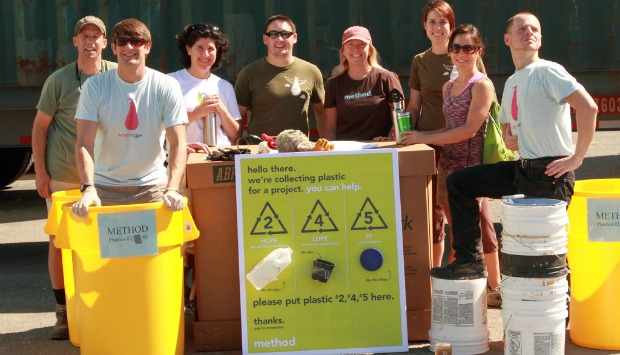 Like the age-old riddle about silence--which expires the moment you say its
name--culture defies cultivation. The latest HR theories can no more measure
a company's culture than an MRI can isolate an individual's soul. No drab mission
statement ever inspired anyone to put in extra hours on a side project,
no weekend team-building exercise in the forest ever got executives and
hourly workers to sit side by side at lunch on Monday, and the world has yet
to see an employee handbook capable of boosting employee morale. The
greater the effort to formalize it--to box it in with structure and guidelines--the faster culture slips away. Nevertheless, diligent HR pros devote dense
manuals full of prescriptive theory to its creation, only to throw up their
hands, exasperated, when it materializes spontaneously in the ranks of unassuming
start-ups all around them. At Method, we understood that too much
process would only be an impediment. The challenge was to institute process
without suffocating culture--but how?
Like the age-old riddle about silence--which expires the moment you say its
name--culture defies cultivation. The latest HR theories can no more measure
a company's culture than an MRI can isolate an individual's soul. No drab mission
statement ever inspired anyone to put in extra hours on a side project,
no weekend team-building exercise in the forest ever got executives and
hourly workers to sit side by side at lunch on Monday, and the world has yet
to see an employee handbook capable of boosting employee morale. The
greater the effort to formalize it--to box it in with structure and guidelines--the faster culture slips away. Nevertheless, diligent HR pros devote dense
manuals full of prescriptive theory to its creation, only to throw up their
hands, exasperated, when it materializes spontaneously in the ranks of unassuming
start-ups all around them. At Method, we understood that too much
process would only be an impediment. The challenge was to institute process
without suffocating culture--but how?
"Our challenge as a company was, how do you keep the magic alive?" says
Rudy Becker, the resinator (aka engineering director). "It's one thing to succeed
when you're small, but how do you keep all the good stuff while you grow? We
knew what got us where we were and we didn't want to lose that. If we did lose
it, it would almost not be worth it anymore."
In the midst of countless aimless discussions about how to fix Method's culture,
our big spender (or CFO), Andrea Freedman, had an epiphany. What if we
were to establish a pod to build and maintain our culture--a kind of ministry of
culture?
Take a moment to identify the best aspects of your life at work and imagine
how a group of devoted caretakers might help those aspects flourish. If you're
still in the business-plan stage, make a list of all the qualities you envision in your
ideal workplace and how you might encourage them on a day-to-day basis. Don't
worry too much about what's practical at this stage--rather than an actionable
plan, think of this as the ideal. The "Ministry of Culture" sounded great in theory,
but we feared it would just be an HR department by another name. Meanwhile,
if culture was by definition greater than the sum of its parts, was it worthwhile--or even possible--to bother with the building blocks?
Questions like this got us thinking. More rules and guidelines were the
wrong thing when the company was young and growing. We were small. Our
touch points were closer. You didn't have to turn in a form for someone else to
do something for you--you just walked over to the one person who did it. But
as we grew and the company got bigger, we understood that some process
might actually help free time and energy.
In search of how to introduce more process without smothering our culture,
we consulted a handful of kindred spirits--companies we believe have built and
maintained strong, organic cultures. After all, we've always been big believers in
seeking inspiration from companies that do things better than we--be it consumer-facing stuff like branding and packaging or behind-the-scenes areas of
expertise like R&D and distribution. So, we figured, why not ask others' advice
on culture?
In search of perspective, we approached six companies we knew and
respected--Apple, Google, Pixar, Nike, Starbucks, and Innocent, the trendy
British beverage maker--asking each of them one key question, "What really
matters to you when it comes to great culture?" Unsurprisingly, the six had a lot
to say. Taking it all down, we noticed three key themes common to all of them:
FOCUS ON HIRING GREAT PEOPLE Rather than hiring on expertise
alone, make sure personalities and attitudes match your company. If you're
about to hire someone and your gut tells you they're not a good fit, leave the
seat open for now.
EMPHASIZE CULTURE FROM THE BEGINNING Explain the company's
culture to new hires, making it clear to them that they were hired in part
because of how they fit in.
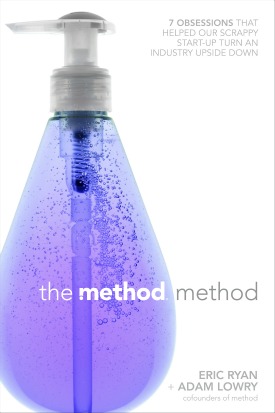 GIVE PEOPLE LOTS OF FEEDBACK Take the time on a regular basis to
remind your employees how they're doing vis-a-vis your values and culture.
In addition, we noticed that all our kindred spirits encouraged their employees
to embrace a sense of purpose at work. It was less a rule than a value, a shared
belief that motivated everyone in his or her unique way. Reflecting on our own
situation, we understood that our culture needed a set of values that clarified our
purpose as a company.
GIVE PEOPLE LOTS OF FEEDBACK Take the time on a regular basis to
remind your employees how they're doing vis-a-vis your values and culture.
In addition, we noticed that all our kindred spirits encouraged their employees
to embrace a sense of purpose at work. It was less a rule than a value, a shared
belief that motivated everyone in his or her unique way. Reflecting on our own
situation, we understood that our culture needed a set of values that clarified our
purpose as a company.
This was the turning point. Though we'd never before defined our values,
Method had always been a purpose-driven company. Purpose was one of our
key competitive advantages--motivating us to work harder, longer, and smarter
than our competition. Shared values and purpose inspired us. There was only
thing left to do: articulate exactly what those were.
Combining our offsite notes with the suggestions we had gleaned from our
culture idols, we recruited a handful of team members from various departments
and asked them to work with our leadership team members to distill everything
down to five core values. The team became known as the Values Pod.
Sure, we could have boiled everything down between the two of us, but
we wanted our values to come from the bottom up. Years later, we discovered
that companies like Zappos and Innocent had gone through the same process.
(To say nothing of the founding fathers ...) Consider the benefits. Drawing your
values from the company ranks ensures that they will represent the richness of
the brand, stay relevant at every level, and be embraced by employees year
after year.
After incorporating input from every level of the company, our Values Pod
presented us the final list:
• Keep Method weird.
• What would MacGyver do?
• Innovate, don't imitate.
• Collaborate like crazy.
• Care.
Known collectively as our Methodology, these values have become the
backbone of our culture obsession -- a framework to provide our team members
with direction and space to grow.
Our values help channel the frenetic atmosphere of innovation and quixotic
spontaneity so vital to our success, into a mutual sense of purpose. To integrate
them into our day-to-day operations and make them actionable, we've
printed them on cards illustrating how each value translates into behavior. By
creating an annual deck of cards bound by a key ring, rather than a standard
sheet of paper, people can hang the values at their desks, and they are easier to
share. Along with the right physical reinforcements--like our open-office floor
plan--our values cultivate the kind of environment that inspires the real magic:
those everyday individual actions that make our company flourish.
Would our values work for you? Maybe. But adopting another company's
values is like letting someone else design your dream house or write your wedding
vows. Establishing your values is your chance to turn yourself inside out and
see what you're really made of as a brand.
Excerpted from The Method Method by Eric Ryan and Adam Lowry by arrangement with Portfolio Penguin, a member of Penguin Group (USA), Inc., Copyright © 2011 by Eric Ryan and Adam Lowry.
[Images courtesy Method]


 Hitting The Fan: Clever Teasers For Al Gore's Day Of Climate Reality
Hitting The Fan: Clever Teasers For Al Gore's Day Of Climate Reality
by: fast company, 2011-09-12 18:25:50 UTC
In preparation for the 24-hour marathon of climate change presentations, the Climate Reality Project has prepared a few short videos to amusingly communicate how dire the situation is.
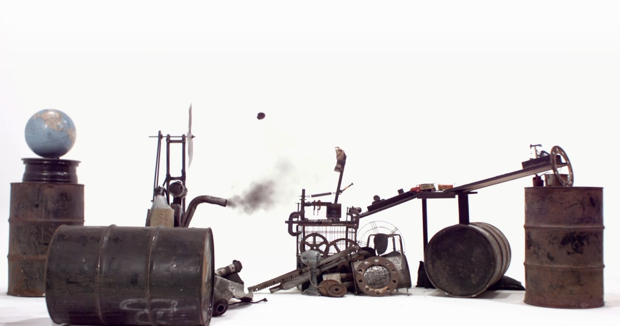
In preparation for Al Gore and adman Alex Bogusky's "24 Hours of Climate Reality," their new organization The Climate Reality Project produced these teaser videos, designed to show us just how close our planet is to a very bad situation. In the first, a decrepit Rube Goldberg machine throws the proverbial fecal matter at the proverbial fan:
[vimeo 28775798]
The main event will take place over 24 hours starting at 8 p.m. Eastern on September 14. Streaming live, the "24 Hours of Climate Reality" will feature a new presentation written by Al Gore, tailored for and recorded on location in each time zone in the world (except for a few hard-to-reach Pacific islands). If you live in France, say, you'll see a presentation in French with specific information about how climate change is affecting the French environment and economy. You can tune in to watch here.
In the meantime, according to the Climate Reality Project, it's time to pull out all the metaphors. The shit has hit the fan and the fat lady is singing to the cows who've come home:
[vimeo 28775859]


 Haitz's Law: Moore's Law for LED Lightbulbs
Haitz's Law: Moore's Law for LED Lightbulbs
by: TreeHugger Design, 2011-09-12 18:33:06 UTC
 Photo: Michael Graham Richard
LEDs: Almost There
Photo: Michael Graham Richard
LEDs: Almost There
Just like Moore's Law has been predicting improvements in the semiconductors used to make computer processors for decades, Haitz's Law (see below) predicts an exponential improvement in the semiconductors used in LED technology. The beauty is that we're almost there -
see my LED reviews - so for LEDs to overtake other lighting technologies and become the dominant way we produce light, Haitz's Law only has to ...
Read the full story on TreeHugger
Old TVs, Suitcases and VCRs Upcycled into Vintage Pet Products
by: TreeHugger Design, 2011-09-12 21:52:36 UTC
 All Photos Courtesy of Atomic Attic
All Photos Courtesy of Atomic Attic
Design firm
AtomicAttic loves vintage, and vintage plus the urge to create new things is the perfect recipe for upcycling. Their most interesting work is made for pets. In Miles and Aimee's workshop, old television sets, VCRs, suitcases and reclaimed wood become beds and food bowls....
Read the full story on TreeHugger
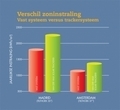
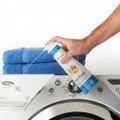


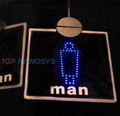


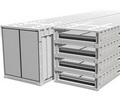
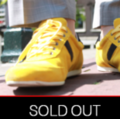

Comments by our Users
Be the first to write a comment for this item.